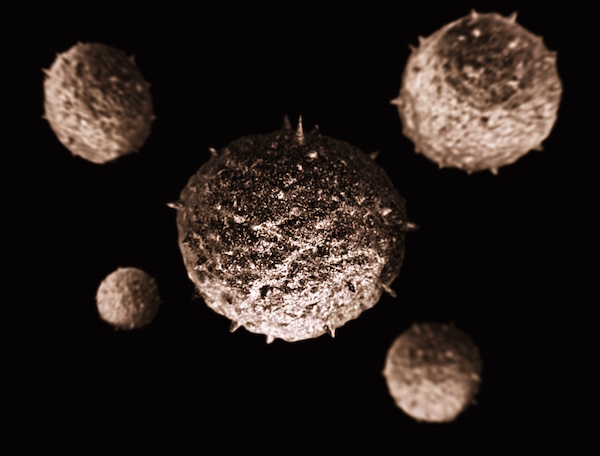
MONDAY, April 19 (HealthDay News) — The latest results from a landmark, long-running study find that both tamoxifen and raloxifene help prevent breast cancer in postmenopausal women, although some differences are starting to emerge between the two drugs.
Raloxifene (Evista), originally an osteoporosis drug, was less effective at preventing invasive breast cancer and more effective against noninvasive breast cancer than tamoxifen. But raloxifene compensated by having fewer side effects and a lower likelihood of causing uterine cancer than its older cousin. Both drugs work by interfering with the ability of estrogen to fuel tumor growth.
“The results of this update are good news for postmenopausal women. It reconfirms that both of these drugs are very reasonable options to consider to reduce the risk of breast cancer in postmenopausal women,” said Dr. D. Lawrence Wickerham, associate chairman of the breast cancer group in the National Surgical Adjuvant Breast and Bowel Project (NSABP), a clinical trials cooperative group. “We are seeing some differences emerging, but both are effective.”
Tamoxifen also stays in the body longer, offering protection for a longer time after women have stopped taking the drug, the study found.
“Both drugs still offer significant protection against breast cancer. The main difference with the longer-term follow-up is that the benefit of protection afforded by raloxifene looks like it’s tailing [after women stop taking the drug], whereas the effect of tamoxifen persists,” said Dr. Mary Daly, chairwoman of clinical genetics at Fox Chase Cancer Center in Philadelphia.
This also means the toxicities of tamoxifen persist after women stop taking that drug, she pointed out.
The findings were presented Monday at the American Association for Cancer Research annual meeting in Washington, D.C., and simultaneously published online in the journal Cancer Prevention Research.
Tamoxifen was first approved to treat breast cancer, then later turned out to also have a preventive effect in high-risk women. It was the first drug ever approved for reducing breast cancer risk, but because of its significant side effects — including the uterine cancer risk — it never really took off in this role.
“Tamoxifen has been an option [for prevention] for over a decade, but many have not chosen it because of toxicity,” said Wickerham, who is chief of cancer genetics at Allegheny General Hospital in Pittsburgh.
Raloxifene was approved to prevent breast cancer in high-risk women on the basis of earlier results from this same trial, called the Study of Tamoxifen and Raloxifene (STAR). The STAR trial compared tamoxifen with raloxifene in almost 20,000 healthy, postmenopausal women who were at higher risk for developing breast cancer.
After four years of follow-up, tamoxifen and raloxifene were neck-and-neck in preventing invasive breast cancer, with both reducing risk about 50 percent.
Now, after almost seven years of follow-up, raloxifene has moved ahead in its ability to prevent noninvasive breast cancer, but appears slightly less effective against invasive breast cancer than tamoxifen, the study found.
“Noninvasive cancer typically stays in the ducts [of the breast],” explained Daly. “The thinking is that this is the earliest form of breast cancer and, if you remove the duct with the cancer in it, that woman could be virtually cured.”
Invasive cancer is disease that has spread outside of the ducts and is most life-threatening, she said.
Wickerham concluded that raloxifene would be a “reasonable choice for a substantial number of women at increased risk for breast cancer. There are lots of women already taking raloxifene to help maintain bone density and reduce the risk of vertebral fractures. From my perspective, these women would be candidates to consider raloxifene … because now you’ve got a two-for-one benefit.”
Women at risk for blood clots should be wary of taking either drug, Daly said. If a woman is at high risk for uterine cancer — she has a strong family history, is obese or has diabetes, for instance — she might consider raloxifene first.
“I do believe that I’m preventing this disease from getting me,” said Marty Smith, 55, of Grand Rapids, Mich., who has taken both tamoxifen and raloxifene and was involved with the STAR trial.
Smith has a strong family history of breast cancer and, although she is not taking either drug right now, is planning to talk to her doctor about resuming raloxifene in the wake of these results.
More information
The U.S. National Cancer Institute has more on the STAR trial.

